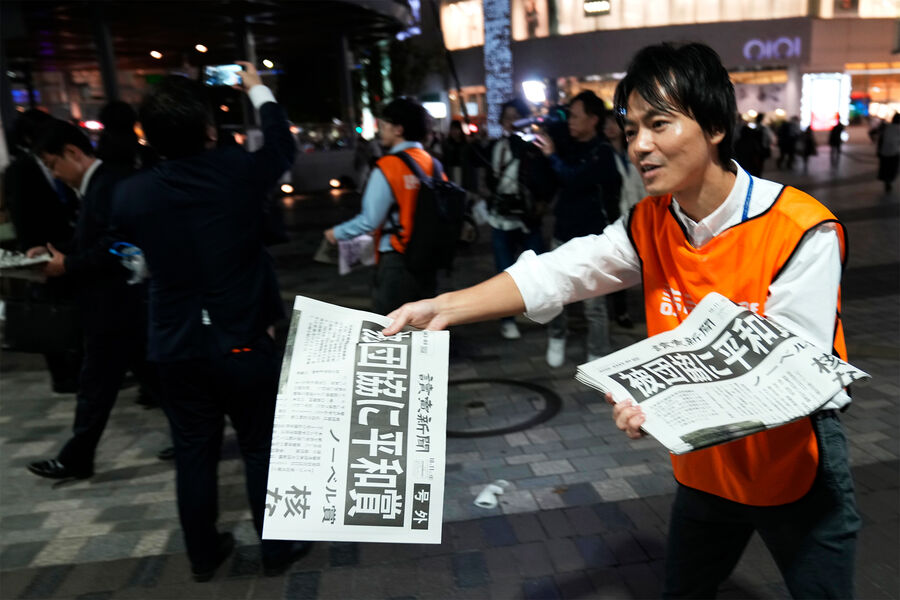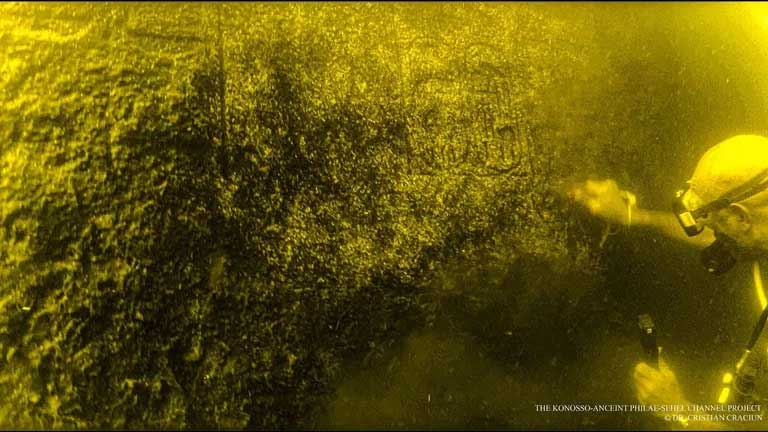In the coastal desert north of Lima, Peru, archaeologists have uncovered the skeletal remains of 227 children, apparently killed and buried hundreds of years ago in a massive ritual sacrifice. The find represents the largest child burial on Earth, according to researchers who have been excavating the site for more than a year, and the bodies discovered so far may be just the tip of the proverbial blade. “No matter where you dig, there’s another one,” said the site’s lead archaeologist.
In 2019, at least 227 murdered children were found at the world’s largest child sacrifice site in Peru. In the coastal desert north of Lima, Peru, archaeologists have uncovered the skeletal remains of 227 children, apparently killed and buried hundreds of years ago in a massive ritual sacrifice. The find represents the largest child burial site on Earth, according to researchers who have been excavating the site for more than a year, and the bodies discovered so far may just be the tip of the proverbial blade.
“Wherever you dig, there’s always another one,” Feren Castillo, the site’s chief archaeologist, told the AFP news site on August 28, 2019.
The bodies of children buried perhaps 600 to 800 years ago were found facing the sea in the modern city of Huanchaco, Peru, which was once a port favored by the pre-Columbian Chimu culture, a society that emerged around 900 and lived along the northern coast of Peru until it was conquered by the Inca Empire around 1475.
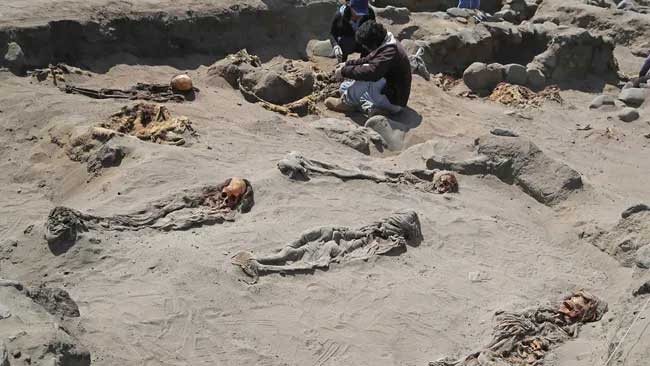
In what archaeologists are calling the largest child sacrifice site in the world, at least 227 boys and girls (ages 4 to 14) have been found in a mass grave in Peru. Their remains were buried between 600 and 800 years ago. Ernesto Arias/EPA-EFE/Shutterstock
Castillo said the site resembled nearby burial sites where large groups of children were apparently herded toward the coast, stabbed in the chest one by one, and buried in a mass grave. Archaeologists say the children at Huanchaco were between 4 and 14 years old when they died, and some bodies still had traces of skin and hair visible.
Given the site’s location and evidence that the bodies were buried in wet weather, Castillo said it was likely the children were killed as an offering to the gods who controlled the El Niño phenomenon, a six-month climate cycle that can bring catastrophic storms and hurricanes to South America.
A similar weather-driven sacrifice may have occurred at the nearby Chimu burial site of Huanchaquito, where the remains of 140 children were discovered in 2018. The children, who ranged in age from 5 to 14 when they died, were found with their chests cut open and, in some cases, their hearts removed. Researchers found the remains of 200 slaughtered llamas nearby. At the time, the site was believed to be the largest child burial site in the world.
In 2021, more ancient child sacrifices were discovered in Peru. They represent the first evidence of Wari ritual offerings to be found in the Lambayeque region. Archaeologists have discovered 29 human bodies buried about 1,000 years ago at Huaca Santa Rosa de Pucala, an archaeological site in the Lambayeque region of northwestern Peru. Four of the skeletons — two children, a teenager, and one adult — are attributed to the Wari culture. The four skeletons represent the first known examples of human offerings from the Wari civilization in the region, Edgar Bracamonte Levano, director of the excavation and a research archaeologist at the Royal Tombs of Sipan Museum, told Live Science in an email.
In addition to human remains, excavations uncovered the skeletons of eight guinea pigs, as well as several alpacas and llamas, all of which were likely sacrificed. Pots, bottles, and a knife with a crescent-shaped blade were also found.
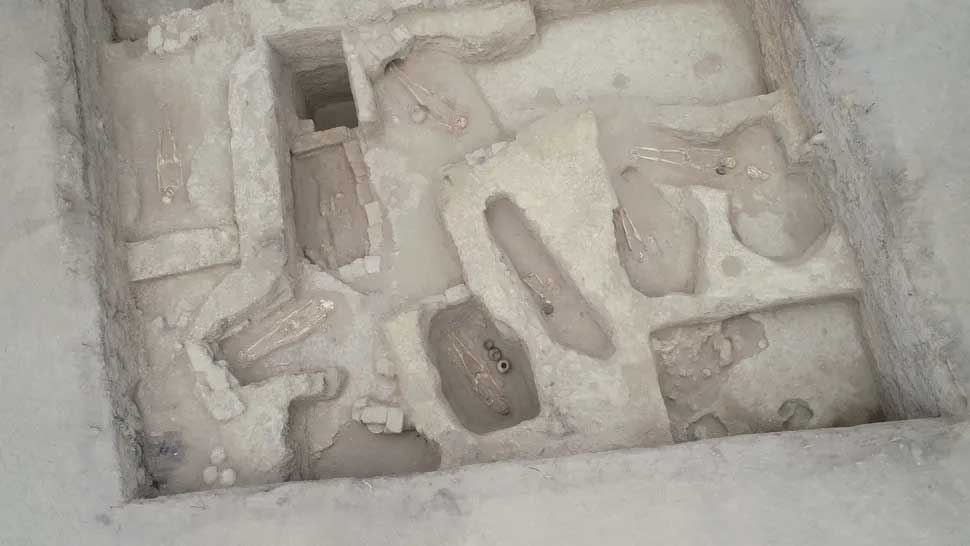
View from above of the excavation site. Edgar Bracamonte Levano
Bracamonte Levano identified the tombs as Wari because they were surrounded by three characteristic D-shaped enclosures, typical of the religious spaces of this culture. The human offerings could have been “part of a possible ritual carried out during the beginning of the construction of these religious spaces in the Wari style,” he said.
In addition to the four human sacrifices, the archaeological team found a fifth individual who had been subjected to a secondary burial. “That is, he was buried in another place and then reburied inside the D-shaped enclosure,” Bracamonte Levano said.
The Wari civilization flourished along the mountains and coasts of modern-day Peru from about 500 to 1000 A.D. The Wari people were known for their fine textiles and carved ceramics, as well as their roads and terraced agriculture, according to the World History Encyclopedia. These roads were later incorporated into parts of the Inca Empire. While the exact structure of Wari society remains open to debate, archaeologists have found evidence that religion was closely intertwined with politics and that women were included in the highest levels of government.
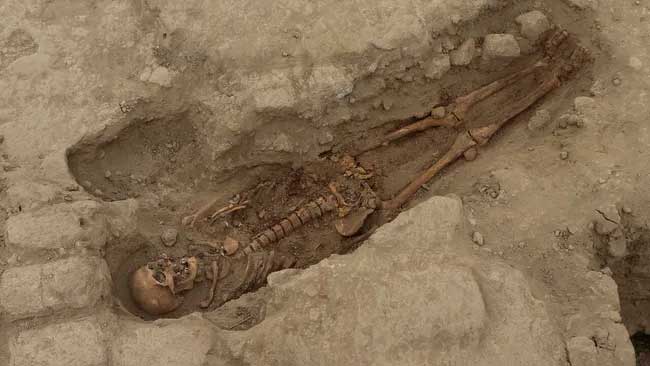
Human skeleton discovered in Huaca Santa Rosa de Pucala. Edgar Bracamonte Levano
The other 25 skeletons found buried — though not sacrificed — at the site belonged to the Moche, or Mochica, culture. The civilization flourished in what is now Lambayeque from about 100 to 700 A.D. and was later supplanted by the Wari. Unlike Wari art, which favors abstract forms and patterns, Moche art is known for its more literal, naturalistic style. That makes artifacts from the two cultures easy to distinguish, Bracamonte Levano said.
Among the most significant Moche discoveries in recent years is the mummy of Lady Cao, a tattooed noblewoman whose forensic reconstruction was the subject of a 2017 National Geographic documentary. Lord Sipan, another famous Moche mummy discovered in 1987, resides in the Museum of the Royal Tombs of Sipan under the watchful eye of Bracamonte Levano.
In 2022, 76 sacrificed children with their hearts ripped out were found in a Peruvian excavation. Many more are likely to be found. Archaeologists say the remains of dozens of sacrificed children have been found in Peru, and there are likely many more to be found.
According to Gabriel Prieto, an associate professor of anthropology at the University of Florida who is leading the excavation at Pampa la Cruz, the site near Huanchaco where the remains were found, the skeletons show that the children’s hearts had been removed.
All 76 skeletons had a “clean transverse cut through the sternum,” Prieto said, suggesting “they may have opened up the chest cavity and then maybe removed the heart.”
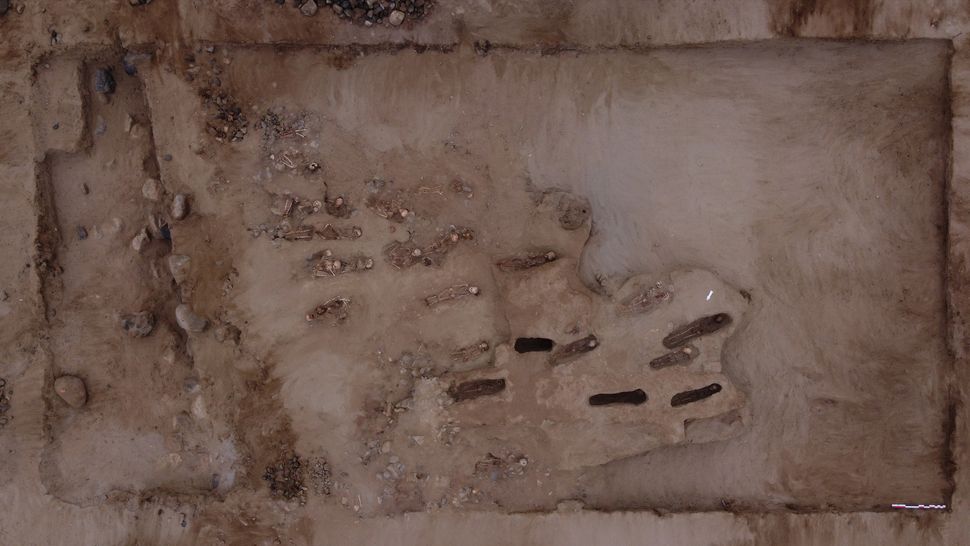
It is likely that many more child sacrifices can be found in the area. Huanchaco Archaeological Program
“They were buried in an extended position, with their feet facing east,” Prieto told Live Science in an email. “They were buried on top of an artificial mound.” It’s unclear why the offerings were placed in this position and location. “We thought that this area, and the mound in particular, were free of Chimú child sacrifices, but we found the opposite,” Prieto said.
Excavations at Pampa la Cruz have been ongoing for several years. So far, 323 child sacrificial bodies have been found at the site, with another 137 child and three adult sacrificial bodies found at a nearby site called Las Llamas. These remains also show that the children’s hearts were removed.
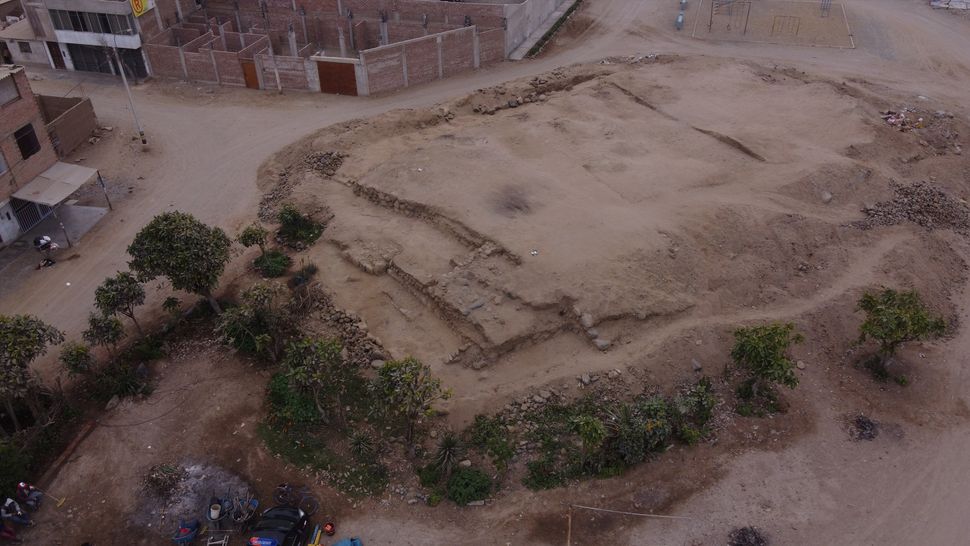
Sacrificed children were buried on top of this artificial mound, which can be seen here. Huanchaco Archaeological Program
Based on the archaeological remains found so far, there are likely many more child sacrifices waiting to be discovered near Huanchaco, Prieto said. “It could be more than 1,000 victims, as crazy as that sounds,” he said.
Radiocarbon dating is needed for the 76 newly discovered skeletons, but previously discovered victims at Pampa la Cruz date to between 1100 and 1200 A.D., Prieto said. Around the same time, the Chimu people, known for their fine metalwork and the city of Chan Chan, flourished in the area.
Prieto noted that it is unclear why the Chimu would have performed child sacrifices in the area on such a large scale, but the Chimu also built an artificial irrigation system and new agricultural fields nearby, and some of the sacrifices may have been made to “sanctify” this agricultural system.
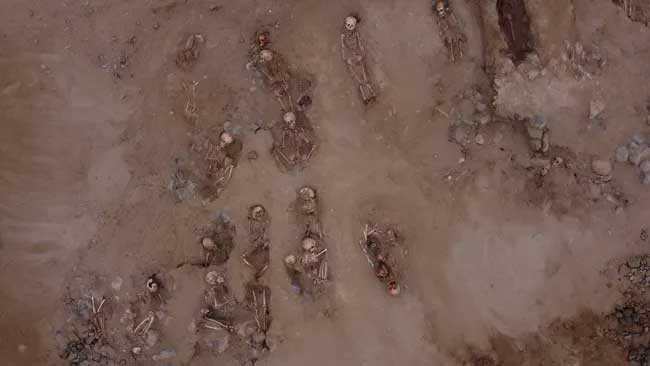
Seventy-six child sacrifices have recently been discovered during ongoing excavations near Huanchaco, Peru. Huanchaco Archaeological Program
People who lived in Huanchaco in the first millennium A.D. also practiced human sacrifice in the area, said Richard Satter, a professor of anthropology at Purdue University Fort Wayne who is part of the team working at Huanchaco. That means the Chimu may have continued the long-standing practice in the area, Satter said in an email.
At the time, Peru had no written language, and so there are no written records detailing the deaths of children. Climate or environmental changes that may have disrupted agriculture in the area may have played a role in the sacrifices.
The group is seeking permission from the Peruvian Ministry of Culture to transport some samples abroad so that they can be tested and more precise dates can be determined.
In 2024, 76 more child victims were found, all with their chests cut open, in Peru. Analysis of previous sacrifices at the same site suggests that the victims were subjugated people brought to work the land.
A 700-year-old burial mound containing the remains of 76 sacrificed children and two adults, all of whom had their chests cut open, has been found in Peru. The burial mound is the latest in a series of sacrificial sites found in Pampa la Cruz, near the coastal city of Trujillo in northwestern Peru. All of the sites are associated with the Chimu, a major civilization that flourished in the region from the 12th to 15th centuries. The Chimu predate the Incas and are known for their art and textiles.
The children were buried naked, with their clothes next to them. Their chests were cut from the collarbone to the sternum, and their ribs were forced open, potentially to access the heart, previous studies of other mounds at Pampa la Cruz have suggested; these included the discovery in 2022 of 76 child sacrifice victims.
Inside the mound, which measures 197 by 66 feet (60 by 20 meters), researchers also found silver and copper squares that may have been sewn onto children’s clothing, as well as ear ornaments and spondylus shells.
Spondylus shells were “more valuable than gold to these people,” said Gabriel Prieto, an associate professor of anthropology at the University of Florida who directs the excavations at Pampa la Cruz. They could only be found further north — in what was then the territory of Lambayeque, a civilization of skilled metalworkers.
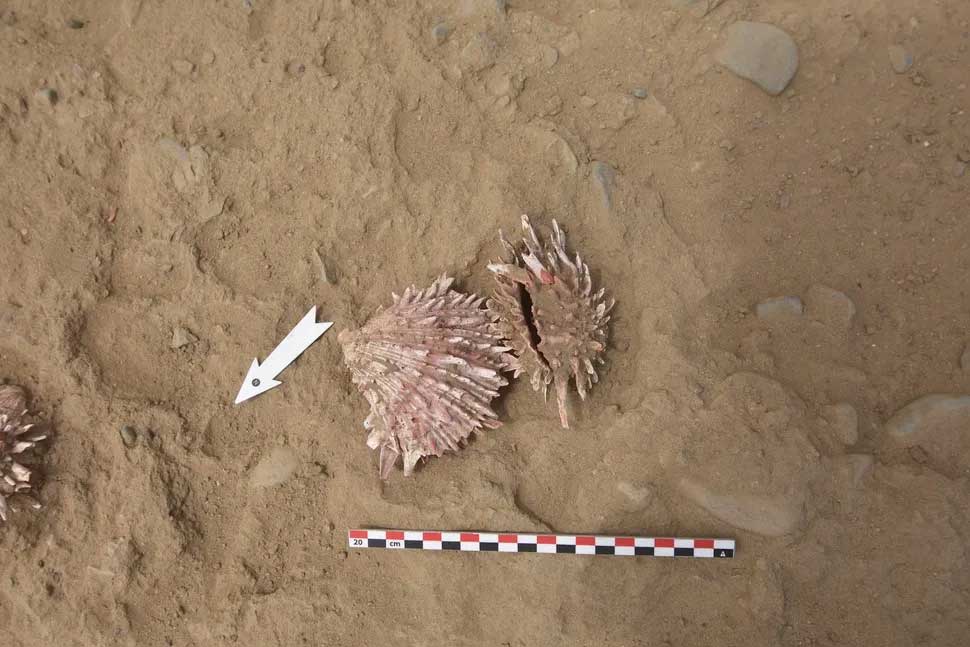
Spondylus shells were valuable to the Chimu. Gabriel Prieto, Huanchaco Archaeological Program
The presence of shells was only the first hint that the mound was linked to Lambayeque. Based on further analysis of 76 other victims found in 2022 at the same site, the researchers determined that all of the victims had cranial modifications, in which the infant’s malleable skull was extended using boards or headbands. This practice was used by the Chimu, but to a less extreme degree of modification. The higher intensity of cranial modifications suggests that the victims may have been of Lambayeque descent.
The combination of cranial modification and shells prompted the researchers to look deeper into the victims’ origins. The team examined isotopes, or variations in elements, in the individuals’ remains. Isotopes in the children’s water and diet showed up in their remains, providing clues about where the sacrifice victims grew up. Based on new isotopic analysis of victims found in 2022, the researchers found that the individuals’ diets were consistent with the Lambayeque region.
Children and their families may have been captured by the Chimu and brought to the site at Pampa la Cruz to build irrigation systems, Prieto suggested. The Chimu were expanding their agriculture into areas where good crops did not grow naturally, and they needed complex irrigation systems to grow food in the Pampa la Cruz area, Prieto said. Once these irrigation canals were completed, children were likely sacrificed to stabilize the land.
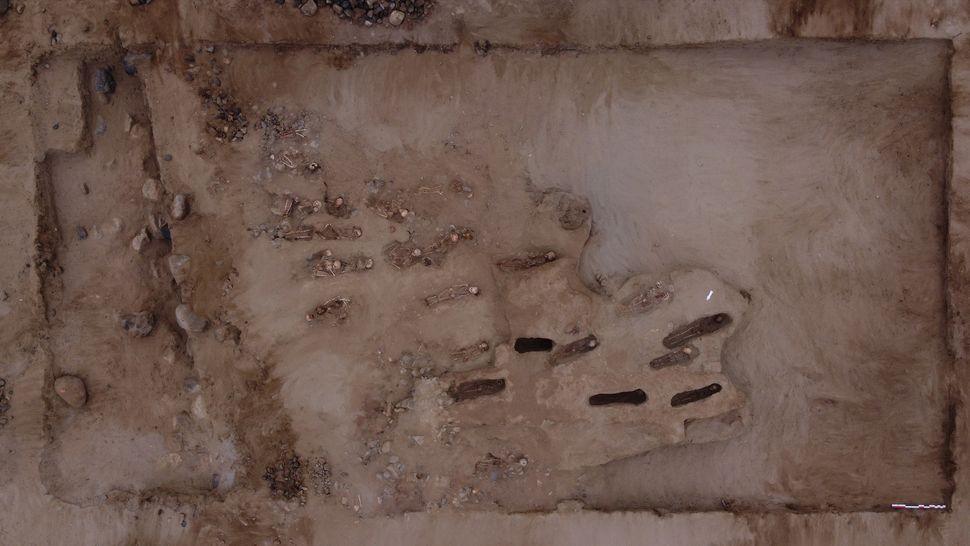
The site of the sacrifice of 76 children and two women is the latest find at Pampa la Cruz, an archaeological site in Peru. Gabriel Prieto, Huanchaco Archaeological Program
“The burial of children in this mound may have been an offering to recharge the fields,” Prieto said. “In Andean cosmology, dead people become ancestors, and ancestors legitimize land rights, justify and maintain the systems that allow the land to yield.”
The fact that these children were likely not descended from the Chimu could add value to the lands, Prieto said.
This is the first excavation at the site to find evidence of non-native sacrifice. But “it’s not just native cities sacrificing their children,” John Verano, a biological anthropologist at Tulane University and a member of the excavation team, told Live Science. “It appears to be controlled by the central government” of the Chimu.
The researchers will explore this theory as they expand their excavations at Chan Chan, the capital of the Chimu civilization. Research at Pampa la Cruz will also continue. “This opens up many, many windows into the study of the Chimu that go beyond the simple idea of their ritual sacrifice,” Prieto said.





